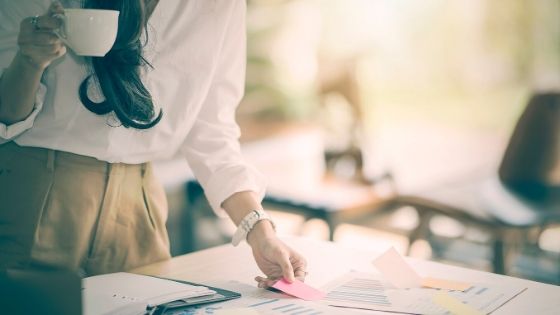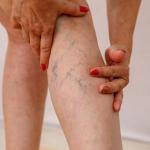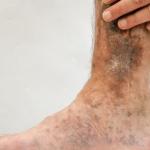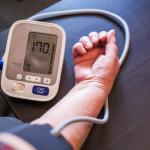
If you have a job that involves being on your feet all day, you may be at increased risk for developing varicose veins. You may also not be aware that these enlarged, twisted, leg veins are not only cosmetic issues. Varicose veins can also cause significant pain or discomfort and affect your ability to comfortably stand, sit, or move around.
Unfortunately, varicose veins are very common in the United States. By the age of 50, an estimated 20% of men and 40% of women are affected. We want you to understand that having varicose veins is not a disease in itself. Instead, varicose veins are signs of underlying vein disease, also known as venous insufficiency.
There are numerous contributing factors to the development of varicose veins. These include age, sex, pregnancy, and family history. Many risk factors are beyond our control. However, because prolonged standing and varicose veins are connected, you may be able to influence this particular one.
So, why is standing for long periods of time so bad for varicose veins? The explanation relates to the basics of venous insufficiency. Prolonged standing makes it more likely that your blood will pool in the lower extremities and place strain on your veins. The resulting, ongoing strain can result in damaged vein valves and, ultimately, the formation of varicose veins.
If you’re wondering whether you can get varicose veins from standing too long, our experts are available with answers. Here’s everything you need to know about varicose veins, vein disease, and finding minimally-invasive treatment for your painful symptoms.
Can Standing Cause Varicose Veins?
As mentioned above, multiple risk factors can lead to the formation of varicose veins. Let’s begin by gaining a better understanding of what, exactly, varicose veins are.
Varicose veins are swollen and often painful veins that commonly form in the lower extremities like the legs, ankles, and feet. They can also develop in other areas of your body. Pregnant women, for instance, often experience varicose veins in the pelvic region.
Varicose veins are a sign of underlying vein disease, or venous insufficiency. While arteries carry blood away from your heart, your veins have a different job to do. Veins are responsible for returning blood to your heart. The veins in your legs and other lower extremities need to work extra hard to return blood against gravity.
In healthy, normally functioning veins, tiny one-way valves help to keep blood flowing in the direction of your heart. When leg veins are placed under strain, such as when you stand for long periods, these valves can malfunction. This can cause blood to flow the wrong direction and begin to pool. When this occurs, your veins can start to swell and eventually develop into varicose veins.
Although varicose veins are not inherently serious, they can lead to a number of dangerous health conditions. These include blood clots and venous ulcers. For some individuals, these complications can quickly develop into life-threatening issues.
Common symptoms of vein disease include:
- Swelling in the legs and ankles
- Tired, aching legs
- Burning in the calf or thigh
- Leg pain that feels better when you walk or raise your legs
- Itchy, dry skin
- Numbness or tingling sensation
- Difficulty standing for long periods
- Non-healing wounds on your legs
Although varicose veins can affect anyone, some people are more at risk than others. Common risk factors and causes include:
Age: As we get older, we are more likely to develop varicose veins. Those over 50 are most at risk.
Inactivity: Lack of movement and exercise results in poor circulation and venous insufficiency.
Being overweight or obese: Excess body weight places undue strain on your veins.
Family history of varicose veins: Vein disease tends to run in families. If you have a close relative affected, you are at greater risk.
Personal history of DVT: If you’ve had Deep Vein Thrombosis (DVT), you are more likely to develop other venous issues. Alternatively, the presence of varicose veins can put you at increased risk for developing DVT.
Pregnancy: It is common for pregnant women to suffer from varicose veins. Unfortunately, each subsequent pregnancy further increases your likelihood of developing these painful veins.
Prolonged standing or sitting: Spending too much time on your feet or in your chair can lead to vein disease.
Does standing cause spider veins? It can. Like varicose veins, spider veins are also signs of underlying vein disease and develop in similar ways.
Bottom line: Standing for long periods can ultimately cause varicose veins, particularly when combined with other risk factors.
Prolonged Standing and Varicose Veins
Research studies also confirm increased venous risks related to frequent standing or sitting. One study, conducted in 2015, found that 11 previous studies demonstrated links between prolonged standing and vein issues. Another study, from 2012, showed that standing more than four hours a day at work led to increased varicose veins. This applied to both men and women.
What to Do if You Need to Stand for Work
So, does standing for long periods cause varicose veins? Yes, it can. But knowing that prolonged standing can cause venous issues does not resolve the underlying problem for everyone. After all, you may be employed in a job that requires you to stand or sit for long periods throughout the day. If so, what should you do?
There are some measures you can take that may help this situation. Although lifestyle changes can be challenging, we believe that your relief from vein pain and discomfort will be worth it. Below are some things to try:
Exercise daily: Physical activity helps improve overall blood circulation and promotes blood flow back to the heart.
Lose excess weight: Maintaining a healthy Body Mass Index (BMI) can help reduce strain on your veins.
Elevate your legs: Spending some time with your feet and legs up each day can help relieve pressure and provide symptom relief.
Uncross your legs: Be mindful of how you sit, since crossing your legs increases pressure inside your veins.
Ask about compression socks: Your doctor may recommend using compression socks to provide symptom relief and keep varicose veins from getting worse.
Reconsider your standing desk: Varicose veins are more likely to develop with prolonged standing, so walk around, change positions, or sit down when possible.
Take frequent breaks to move around: If you are required to stand for long periods, try to take breaks as often as possible and get your blood flowing.
Stretch your legs: You may be stuck in one place, but you can still do calf stretches, ankle rolls, and toe flexes for better circulation. Massage can also be beneficial.
Manage other health conditions: Other health issues, such as uncontrolled high blood pressure and diabetes, can increase strain on your veins. Work with your doctor to treat other underlying conditions.
Vein Treatment at USA Vein Clinics
While the above suggestions can help lower your varicose vein risks, they are not always enough to avoid vein disease. If you are suffering from varicose veins, we want you to know that minimally-invasive, outpatient vein treatment is available. You may be surprised to discover how quickly you can find pain and symptom relief and get back to normalcy.
If you would like to learn more about varicose veins, vein disease, or vein treatment, we are here for you. You can schedule an initial consultation online at one of dozens of clinic locations nationwide or through a telemedicine call. Wherever we see you, we look forward to helping you take back control of your life.
Related Articles
10 Effective Ways to Get Rid of Varicose Veins for Good






